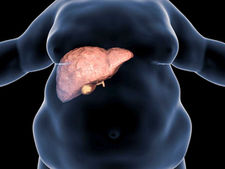
Urogynecology
Urogynecology is a specialty in which diseases related to gynecology and urology are examined together and diseases such as pelvic organ prolapse and urinary incontinence are treated in women. The field of urogynecology deals with the treatment of problems such as urinary incontinence, bladder prolapse, and uterine prolapse in women. Urinary incontinence in women: It is defined as the involuntary outflow of urine from the bladder where urine accumulates, without the patient's control. Urine accumulated in the bladder sends a signal to the brain to be expelled when the bladder is full. A malfunction in this system causes the patient to involuntarily leak urine. When it becomes chronic, urinary incontinence is considered a disease.
Although urinary incontinence is seen in all age groups, it is generally more common in older ages. Urinary incontinence in women occurs in different ways. There are different types of urinary incontinence, such as stress urinary incontinence, incontinence due to urgency, urinary incontinence combined with stress and urgency (mixed urinary incontinence), and urinary incontinence in the form of bladder overflow. Stress urinary incontinence is a condition in which the patient cannot hold his urine due to sudden reactions such as laughing, sneezing and coughing. Urge urinary incontinence can be defined as the sudden need to go to the toilet. It is a situation where the patient suddenly feels the need to go to the toilet and therefore involuntarily leaks urine. In mixed urinary incontinence, both stress factors and the sudden signal of needing to go to the toilet are seen together. Overflow type urinary incontinence occurs in a similar manner to urge type incontinence.
The patient does not transmit signals to the brain when the bladder is full, and urinary incontinence occurs as the bladder overflows. In the treatment of urinary incontinence, the doctor must first determine which type of urinary incontinence it is. Once the type of urinary incontinence is determined by the doctor, treatment methods are determined. After the physical examination, he obtains information about the bladder by performing tests such as blood sugar, urinalysis, urine culture and ultrasound. If necessary, a full diagnosis is made with examinations such as urodynamics test or pelvic ultrasound. After diagnosis, antibiotic treatment for urinary tract infections is started, depending on the severity of the disease. Various exercises (Kegel exercises) are recommended to strengthen the pelvic muscles. While surgical treatment is necessary for stress urinary incontinence; In case of urge urinary incontinence, drug treatment is started. Pelvic organ prolapse: It can be defined as one or more organs in the pelvic area shifting from their normal position towards the vagina. Although it is not a life-threatening disease, it is uncomfortable and painful and reduces the quality of life. There are some factors that cause pelvic organ prolapse. These are: Weakening of vaginal tissues during pregnancy and birth. Weakening of muscles during aging and menopause. Excessive weight. Lifestyle. Pelvic organ exercises, hormone treatments and surgical procedures are applied according to the severity of sagging and the age and condition of the patient. While changes such as changing lifestyle, adjusting nutritional content, and losing weight are sufficient for some types of pelvic organ prolapse, in more advanced cases, different techniques for surgical repair are clarified as a result of doctor-patient communication.
FOR INFORMATION AND APPOINTMENT, YOU CAN LEAVE YOUR NUMBER OR ASK OUR EXPERTS
YOU CAN LEAVE YOUR NUMBER FOR INFORMATION AND APPOINTMENT AND ASK QUESTIONS TO OUR EXPERTS



-04.png)
-06.png)
-05.png)
-08.png)
-07.png)























